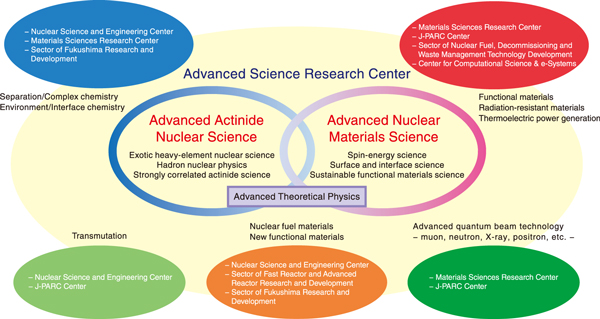
Fig.1 Organization of the Advanced Science Research Center (ASRC) and its role in realizing new era of nuclear science
The Advanced Science Research Center (ASRC) strengthens basic research to discover novel principles and phenomena, create new materials, and generate innovative technologies. The objective of ASRC is to realize the New Era of Nuclear Science, i.e., the future vision of the JAEA called “JAEA2050+.” In this context, we establish our role as a center of excellence (COE) in the field of nuclear science by promoting cooperation between different fields and attracting excellent research personnel.
The ASRC is organized into seven research groups working in the fields of (1) advanced actinide nuclear science, (2) advanced nuclear materials science, and (3) advanced theoretical physics, as shown in Fig.1. Herein, we will highlight the achievements made by each group.
In the field of exotic heavy-element nuclear science, we have established a method to study the nuclear structure of actinide nuclei using multinucleon transfer reactions, which are important in nuclear transmutation. This approach can be also used to discover the properties of exotic nuclei, such as neutron-rich actinide nuclei (Topic 3-1). The hadron nuclear physics group conducted an experiment at the Japan Proton Accelerator Research Complex (J-PARC) on the scattering of Σ+ particles by protons to identify the origin of the repulsive force between two nucleons generated when they approach each other. The Σ+ particle with a strangeness quark exhibits repulsive force even at distances at which nucleon-nucleon interactions become attractive (Topic 3-2). The research group working on strongly correlated actinide science is investigating the superconductivity of a uranium-based compound. This group devised a method to produce almost-defect-free single crystals of uranium telluride (UTe2), which has unique properties that make it an important material in this field. The new method is important for obtaining high-quality data of the superconductivity of uranium compounds (Topic 3-3).
In the field of spin-energy science, a new approach to detect sound wave was studied theoretically. This approach is based on a charge density wave, in which the electron density and crystal lattice are simultaneously modulated with a certain periodicity. This modulation can be clearly seen from the current (I)−voltage (V) characteristics. A significant difference in the I−V curve was identified in the presence of sound waves (Topic 3-4). The research group exploring surface and interface science found that hydrogen and deuterium ions have extremely different probabilities of tunneling through a graphene layer. This phenomenon can be widely used to enrich deuterium, which has useful industrial applications (Topic 3-5). The development of high-performance tunnel magnetoresistive elements, consisting of tunneling-barrier lamina sandwiched by magnetic-electrode layers, is one of the key subjects in the field of sustainable functional materials science, as these elements can be used in developing magnetic head and memory. In addition, these elements are considered to be radiation-resistant. In this regard, a technical challenge was to produce a thin magnetic-electrode to improve the performance. Such electrodes were fabricated by forming layers of different materials with thickness on the scale of micrometers (Topic 3-6).
The advanced theoretical physics group investigated how the energy inside a magnet changes as the magnet becomes thinner. They found that the energy changes when the thickness of the magnet decreases to a few nanometers. The result resembles a Casimir effect, i.e., attraction between two metallic plates placed closely in vacuum. In the present case, the pressure inside the magnet is modified, in turn, changing various properties of the magnet (Topic 3-7).